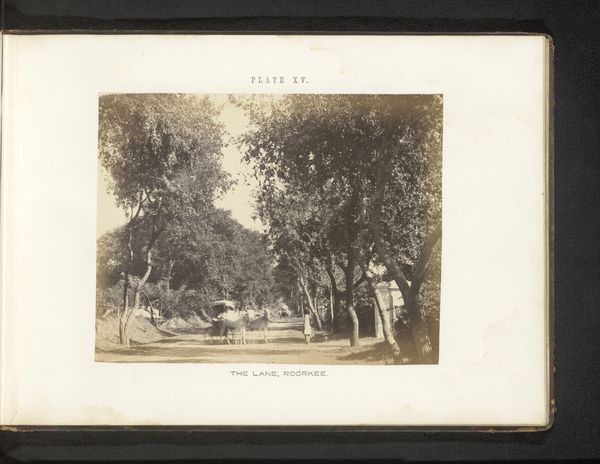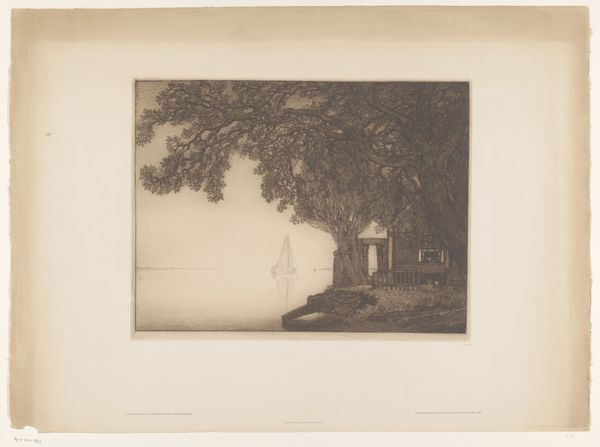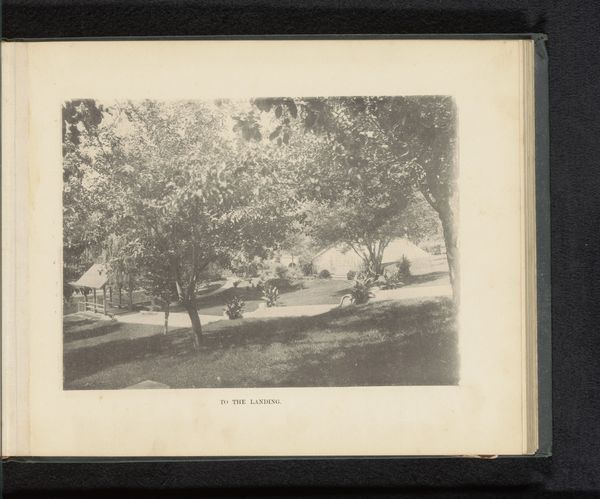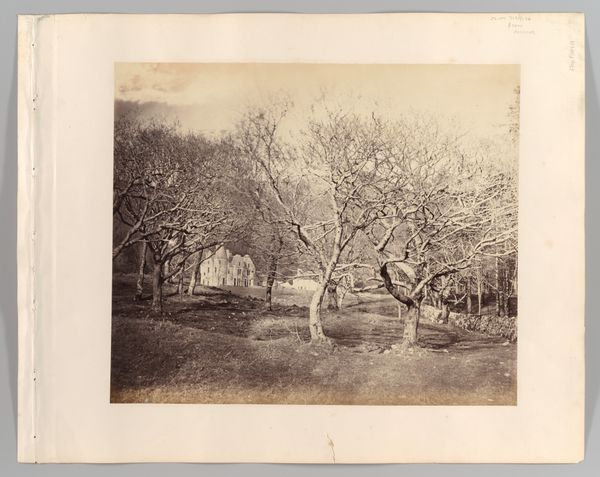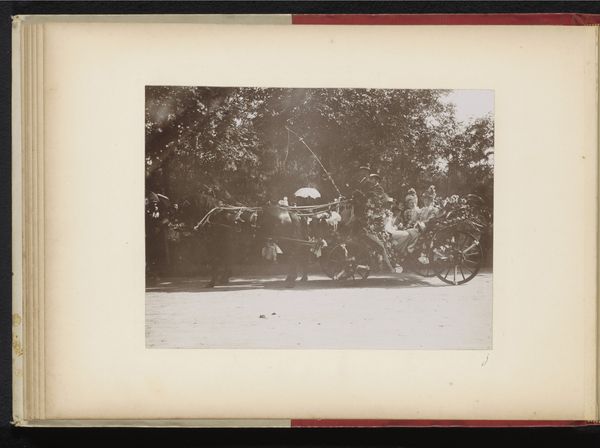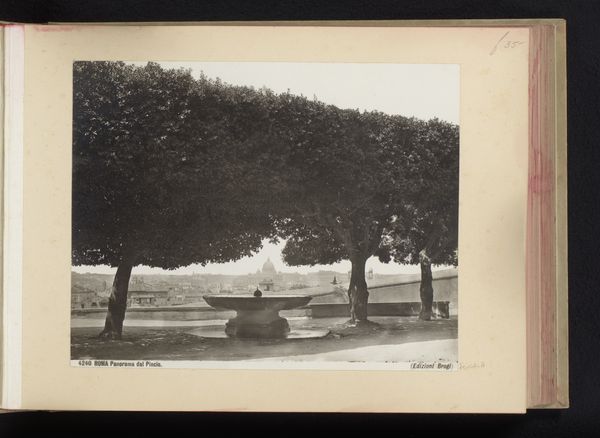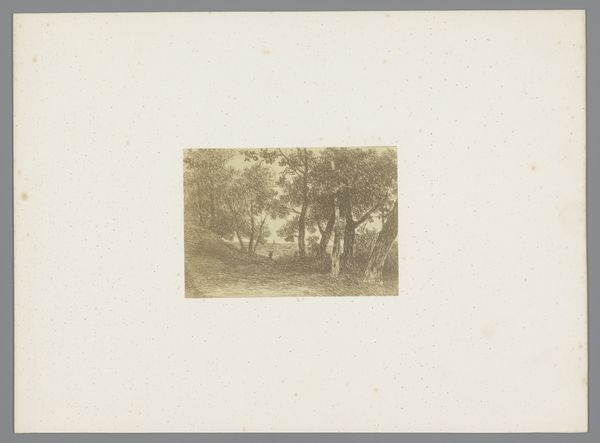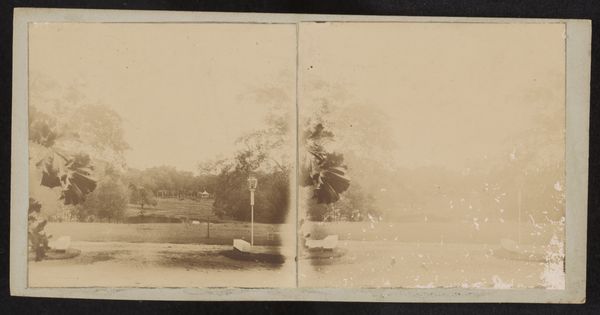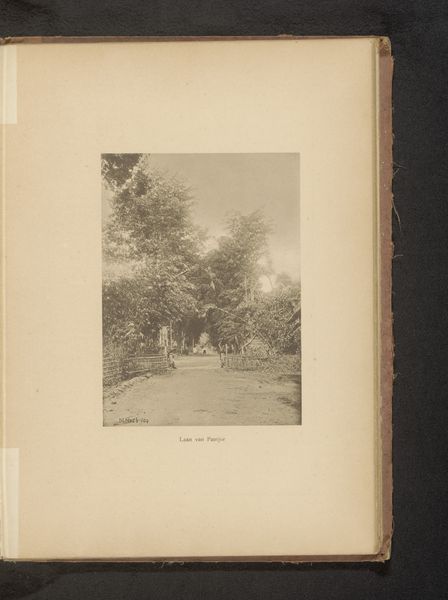
Gezicht op Rome, gezien vanaf de tuinen op de Pincio c. 1875 - 1900
0:00
0:00
photography
#
pictorialism
#
landscape
#
photography
#
cityscape
#
realism
Dimensions: height 330 mm, width 243 mm
Copyright: Rijks Museum: Open Domain
Editor: So this is "Gezicht op Rome, gezien vanaf de tuinen op de Pincio", or "View of Rome from the gardens on the Pincio", by Gustave Eugène Chauffourier, sometime between 1875 and 1900. It’s a photograph, obviously. What I find interesting is the framing with the trees; it's almost theatrical. What strikes you when you look at this piece? Curator: The photographic process itself becomes significant. Think about the labor involved in creating this image. The photographer isn’t just pointing and shooting. There’s the preparation of the photographic plate, the long exposure time required, and then the developing process. It's about labor and transformation of material. Editor: Right, it wasn’t like snapping a quick picture with your phone. Curator: Exactly. The very act of creating this photograph, with its slow, deliberate process, stands in contrast to our modern, instantaneous image culture. And, let’s consider the paper it's printed on, the chemicals used—these are material choices, aren’t they? These decisions tell us about the photographer’s aesthetic values but also reflect the material conditions of the time. How accessible were these materials? What did they cost? Editor: That's a good point, and it adds a completely different layer to how I saw it originally! It's not just a nice landscape; it speaks about economics and industry of the period, not just aesthetic representation. I wonder if this material context impacts how we interpret the 'realism' present. Curator: It certainly does. Was photography readily available for all classes of people to procure as a memento? Considering materiality brings historical power dynamics to the fore. I wonder: Does focusing on the trees and shadows emphasize the process over purely representational aims? Editor: Thinking about it as a physical object produced through labor, and about how that material production then reflects on the image's social context, definitely opens up a lot of avenues for understanding the piece. Thank you. Curator: Precisely, viewing the labor helps reveal the photographer’s historical context of production, which ultimately informs our understanding of the image’s creation.
Comments
No comments
Be the first to comment and join the conversation on the ultimate creative platform.

